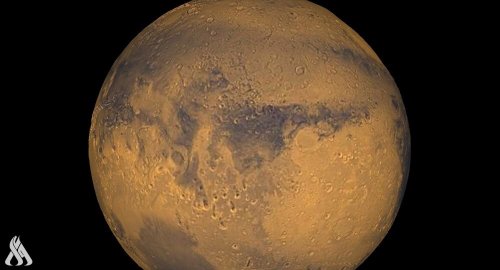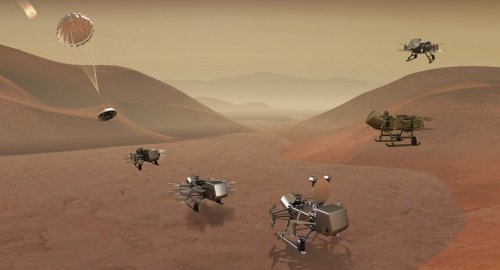
Mars was never fit for life, according to a new study

- 24-09-2021, 09:15
INA-sources
Mars came close to becoming a habitable planet. Very close. If everything was right for the Earth when it came to sustaining life (atmosphere, water, proximity to the sun) and for Mercury, Venus and the outer planets, with their extreme temperatures and inhospitable chemistry, there is no started from the beginning, for the red planet the game was a little more nuanced.
Thanks to the data collected over the years by rovers and other missions, we know with certainty that there was water on Mars, a lot of water judging by the basins and river beds that we can identify on its surface. However, 4 billion years ago the Martian core cooled, shutting down the dynamo that supported its magnetic field. This event left the planet vulnerable to the solar wind, which ripped away the atmosphere and allowed Martian water to explode into space. In a short time, in geological terms, the planet became a desert. This, at least, has long been the predominant thesis that supports a very broad dynamic over time.
However, a new paper just published in Proceedings of the National Academy of Sciences seems to point to another track. According to the research, in fact, there were no great hopes for Mars from the beginning. The size, half the Earth’s diameter, and a mass equivalent to 1/9 of that of our planet have never produced enough gravitational attraction to hold back the atmosphere and water. In short, with or without a magnetic field, according to the scientists led by Zhen Tian of Washington University in St. Louis who signed the investigation, Mars was doomed to the fate that it then had.
A result that scholars have arrived at by analyzing 20 Martian meteorites from various eras, from a few hundred million years to 4 billion, capable of witnessing the transition of Mars from a planet rich in water to a dry planet. However, even in the oldest samples there would be no traces of moisture to be found. On the other hand, the passage of time, not to mention the long journey made by meteorites in Space, would have caused the complete evaporation of a volatile compound such as water. In fact, the researchers were looking for something else: some isotopes of potassium, present in abundance in Mars billions of years ago and a sort of signal for the presence of water. “Potassium is a moderately volatile element (which mimics the behavior of highly volatile elements) but it is not too volatile to be completely lost,” Kun Wang, one of the authors of the study, wrote in an email to Time. “It is easier to measure with high precision.” The more isotopic potassium the researchers found in the rocks, the more water there would be.
In the end, though, it’s not like they’ve spotted so much. The results indicate that not only did the water not wait for the magnetic field to die out and the atmosphere to flow away before it too faded; it actually began to disappear before the once hot planet had completely cooled down. “The loss of water and volatile substances to the planet occurred in its hot and violent phase,” explained Wang. That phase, he added, took place “long before” the magnetic field closed.
Among other things, the scientists repeated the same analysis on meteorite samples from the Moon and from the large asteroid 4 Vesta (a large body in the main belt, the second most massive with an average diameter of about 525 kilometers and an estimated mass equal to to 12% of that of the entire belt), discovering a sort of relationship between possible traces of water and the size of celestial bodies: Mars was drier than the Earth but with a greater quantity of water than the small Moon, however more “humid” (there pass the term) of Vesta. An observation that could frustrate our hopes of finding life, past or even present, not only on Mars but on exoplanets, i.e. bodies outside the Solar System, whether or not they are in the so-called habitable belts, i.e. at the right distance and inclination. from the stars around which they orbit so that the temperatures are not too hot or too cold to allow the presence of liquid water.
In any case, on Mars there is still a lot to understand and not all is lost: a lot of water is imprisoned in the parmafrost of the poles and more perhaps under the surface, where it could be in a liquid state at least for a few moments of the Martian year. “Forms of microbial life that emerged in the first wetter era on the planet may have found refuge there since those times – explains Time – Mars would never have been a garden world like Earth, but that doesn’t mean it can’t move again.”
White House: Talks with Iran were very positive and constructive
- International
- 09:40
US Embassy: Trade Mission of 60 Companies Visits Iraq
- politics
- 25/04/07
CBI unveils comprehensive reform plan to modernize banking sector
- Economy
- 25/04/07
Al-Sudani Meets Delegation from J.P. Morgan Bank
- politics
- 25/04/08












